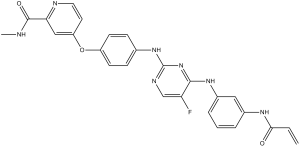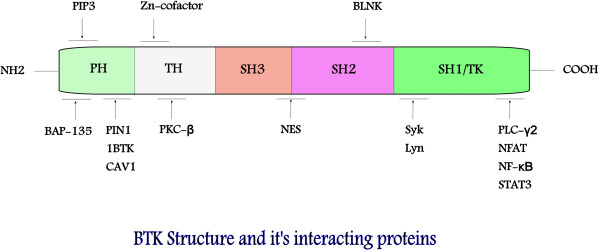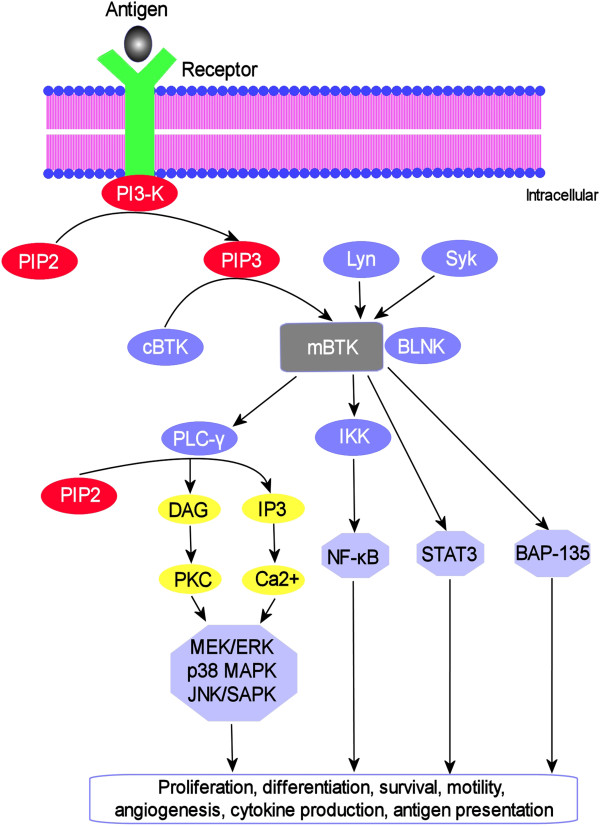This product is for research use only, not for human use. We do not sell to patients.

| Size | Price | Stock |
|---|---|---|
| 250mg | $980 | Check With Us |
| 500mg | $1420 | Check With Us |
| 1g | $2100 | Check With Us |
Cat #: V0645 CAS #: 1202759-32-7 Purity ≥ 98%
Description: CNX-774 (CNX774) is an irreversible/covalent, orally bioavailable, and highly selective inhibitor of BTK (Bruton's tyrosine kinase) with potential anticancer activity. It inhibits BTK with an IC50 of<1 nM. CNX-774 acts by forming a covalent bond with the Cys-481 residue within the active site of BTK, which is an key enzyme in the B-cell antigen receptor (BCR) signaling pathway, and also plays an pivotal role in the maturation of mast cells activation and B cells.
References: [1]. Matthew Labenski, et al. In Vitro Reactivity Assessment of Covalent Drugs Targeting Bruton's Tyrosine Kinase.
Publications Citing InvivoChem Products
Product Promise

- Physicochemical and Storage Information
- Protocol
- Related Biological Data
- Stock Solution Preparation
- Quality Control Documentation
| Molecular Weight (MW) | 499.5 |
|---|---|
| Molecular Formula | C26H22FN7O3 |
| CAS No. | 1202759-32-7 |
| Storage | -20℃ for 3 years in powder formrr |
| -80℃ for 2 years in solvent | |
| Solubility In Vitro | DMSO: 100 mg/mL (200.2 mM)rr |
| Water: <1 mg/mLrr | |
| Ethanol: 2 mg/mL (4.0 mM) | |
| SMILES Code | O=C(NC)C1=NC=CC(OC2=CC=C(NC3=NC=C(F)C(NC4=CC=CC(NC(C=C)=O)=C4)=N3)C=C2)=C1 |
| Synonyms | CNX 774; CNX-774; CNX774; Chemical Name: 4-(4-((4-((3-acrylamidophenyl)amino)-5-fluoropyrimidin-2-yl)amino)phenoxy)-N-methylpicolinamide InChi Key: VVLHQJDAUIPZFH-UHFFFAOYSA-N InChi Code: InChI=1S/C26H22FN7O3/c1-3-23(35)31-17-5-4-6-18(13-17)32-24-21(27)15-30-26(34-24)33-16-7-9-19(10-8-16)37-20-11-12-29-22(14-20)25(36)28-2/h3-15H,1H2,2H3,(H,28,36)(H,31,35)(H2,30,32,33,34) |
| Protocol | In Vitro | In vitro activity: CNX-774 is a potent, irreversible/covalent, orally bioactive, and highly selective BTK (Bruton’s tyrosine kinase) inhibitor with IC50 of<1 nM. It forms a ligand-directed covalent bond with Cys-481, a non-conserved amino acid within the active site of the enzyme. Kinase Assay: In biochemical assays, CNX-774 has demonstrated potent inhibition of Btk with an IC50 of<1nM in a continuous-read assay. The covalent bonding of CNX-774 to Btk was confirmed by incubating recombinant Btk protein with a 10-fold molar excess of CNX-774 for 1 hour at room temperature and analysis by MALDI-TOF MS. A shift of protein mass corresponding to the molecular weight of CNX-774 confirmed the covalent bonding of CNX-774 to Btk. Digestion of the covalently bonded Btk with pepsin followed by MSMS analysis established the bonding of CNX-774 to Cys-481. Cell Assay: In cellular assays, CNX-774 demonstrates potent inhibitory activity towards BTK with IC50 of 1-10 nM by targeting Cys-481 residue within the ATP binding site of the enzyme. Cellular potency as well as prolonged duration of action of CNX-774 was demonstrated in Ramos cells by using a biotinylated covalent probe that targets the same Cysteine residue as CNX-774. CNX-774 was found to be >90% extractable after 2 hrs of incubation in both rat and human whole blood. These results demonstrate that CNX-774 has potent inhibitory activity towards the intended target, Btk, while achieving remarkable specificity in a variety of assays designed to assess off-target reactivity towards abundant cellular thiols and blood proteins. |
|---|---|---|
| In Vivo | CNX-774 is stable and non-reactive in fresh human and rat whole blood and does not covalently bond to any of the mid-level abundance human plasma proteins. CNX-774 demonstrates potent inhibitory activity towards the intended target, Btk, while achieving remarkable specificity in a variety of assays designed to assess off-target reactivity towards abundant cellular thiols and blood proteins. |
| Solvent volume to be added | Mass (the weight of a compound) | |||
|---|---|---|---|---|
| Mother liquor concentration | 1mg | 5mg | 10mg | 20mg |
| 1mM | 2.0020 mL | 10.0100 mL | 20.0200 mL | 40.0400 mL |
| 5mM | 0.4004 mL | 2.0020 mL | 4.0040 mL | 8.0080 mL |
| 10mM | 0.2002 mL | 1.0010 mL | 2.0020 mL | 4.0040 mL |
| 20mM | 0.1001 mL | 0.5005 mL | 1.0010 mL | 2.0020 mL |
This equation is commonly abbreviated as: C1 V1 = C2 V2
- (1) Please be sure that the solution is clear before the addition of next solvent. Dissolution methods like vortex, ultrasound or warming and heat may be used to aid dissolving.
- (2) Be sure to add the solvent(s) in order.






































